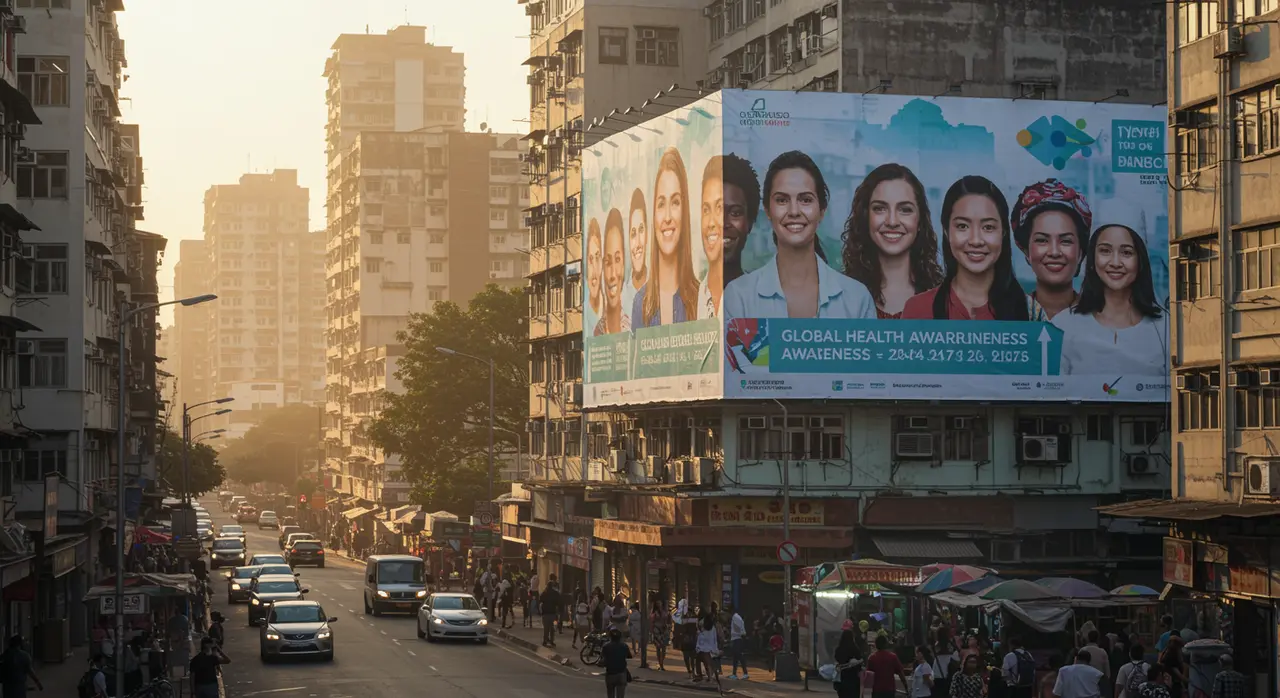Mpoxs Global Spread: Waning Immunity and Urbanization Fuel Public Health Crisis
42 views
The emergence of mpox, a viral disease long overshadowed by its infamous relative smallpox, has set off alarm bells among global health experts. Once confined to sporadic outbreaks in rural parts of Africa, the disease has transcended geographic boundaries, evolving into a global public health concern. The shift, marked by the rise of the clade IIb strain in 2022, has not only altered the virus's transmission dynamics but has also exposed vulnerabilities in the world’s preparedness for zoonotic diseases. With genetic mutations enhancing its ability to adapt to humans, and a backdrop of declining immunity and inadequate medical resources, mpox is now threatening to establish itself as a recurring global challenge.
A Virus on the Move: The Changing Face of Mpox
For decades, mpox remained a relatively obscure disease, its outbreaks largely restricted to rural Africa, where it would occasionally spill over from animal reservoirs to human populations. But the emergence of the clade IIb strain in 2022 marked a turning point. Unlike earlier strains, which spread primarily through close contact in familial or community settings, clade IIb has demonstrated a troubling ability to transmit rapidly among adults, particularly through intimate contact. This shift has been most notable among sexually active groups, where the virus has found new pathways to propagate.

Interestingly, scientists have not observed significant biological changes in the virus itself that would explain this sudden increase in transmissibility. Instead, they point to genetic mutations driven by human enzymes, particularly APOBEC3, as a key factor. These mutations appear to be enabling the virus to better adapt to human hosts, raising the specter of a pathogen that could become increasingly adept at spreading and evolving.
Adding to the complexity, the current outbreaks are no longer limited to clade IIb. All four mpox clades have been reported in recent outbreaks, with clade I standing out for its higher mortality rates and its troubling rise among children, particularly in the Democratic Republic of Congo (DRC). This trend underscores the virus’s ability to exploit gaps in public health infrastructure, particularly in regions already grappling with other infectious diseases.
The Perfect Storm: Urbanization, Immunity, and Medical Gaps
The global spread of mpox is not happening in a vacuum. A confluence of factors has created fertile ground for the virus to thrive. Chief among them is the waning immunity from smallpox vaccinations, which were discontinued after the disease’s eradication in 1980. While smallpox and mpox are distinct diseases, the vaccines for the former offered cross-protection against the latter. Now, with a generation or more unvaccinated against orthopoxviruses, the world is increasingly vulnerable.
Urbanization has further compounded the problem. As people migrate to cities in search of better opportunities, the close quarters and high population densities of urban life provide an ideal environment for the virus to spread. This is particularly concerning given that mpox is no longer confined to specific social groups or geographic regions. Its ability to leap across continents and demographics suggests that it could establish itself as an endemic disease in multiple parts of the world.
Efforts to control the virus have been hampered by a lack of medical tools. Diagnostics remain scarce, particularly in low-income countries where the disease is most prevalent. Vaccines and antivirals, though available, are in limited supply, and some strains of the virus have already shown resistance to existing antiviral treatments. This combination of factors has made it exceedingly difficult to contain outbreaks, let alone prevent new ones.
A Call for Global Action
Scientists and public health experts agree that the fight against mpox requires a coordinated global response. At the heart of this effort is the need for improved surveillance. Monitoring animal populations for signs of the virus is crucial, as mpox is a zoonotic disease that can jump from animals to humans. Early detection in animal reservoirs could provide a critical window of opportunity to prevent human outbreaks.
Equally important is the need for local vaccine production. Reliance on a handful of manufacturers in high-income countries has created bottlenecks that delay vaccine distribution to the regions that need it most. Expanding production capabilities to include low- and middle-income countries could help address this imbalance, ensuring that vaccines are available where they are most urgently needed.
Public health campaigns must also focus on targeted interventions. Educating communities about the modes of transmission and symptoms of mpox can empower individuals to take preventive measures. Special attention should be given to vulnerable populations, such as children in the DRC, who are disproportionately affected by the more severe clades of the virus.
A Broader Perspective: Lessons from Mpox
The global spread of mpox serves as a stark reminder of the interconnectedness of human and animal health. As the world continues to grapple with the aftermath of the COVID-19 pandemic, mpox offers yet another example of how zoonotic diseases can exploit gaps in our public health systems. It also highlights the urgent need for a more proactive approach to disease prevention, one that prioritizes surveillance, research, and equitable access to medical tools.
Moreover, the rise of mpox underscores the importance of maintaining vigilance even after the apparent eradication of a disease. The discontinuation of smallpox vaccinations, though understandable at the time, has had unintended consequences that are now becoming painfully evident. This should serve as a cautionary tale for other vaccination programs, particularly as vaccine hesitancy and misinformation continue to undermine efforts to control preventable diseases.
In the end, the fight against mpox is not just about containing a single virus. It is about strengthening the global health architecture to better withstand the challenges of an increasingly interconnected and urbanized world. Without concerted action, mpox could become a permanent fixture in the landscape of infectious diseases, a grim reminder of what happens when we fail to learn from the past.